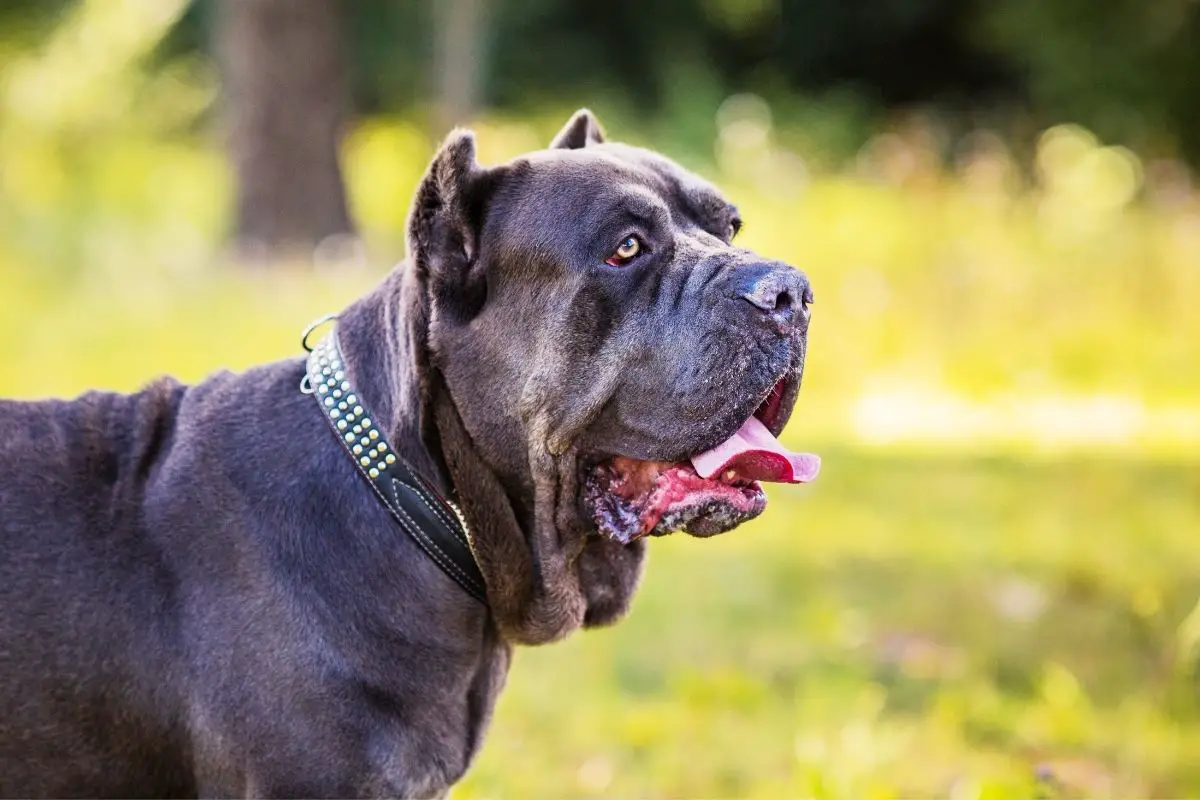What they say is true, dogs are man’s best friend. They’re loyal, intelligent, and you better believe they love a cuddle.
Of course, not all dog breeds can live up to the same high standards as others. For instance, you can’t expect Chihuahuas to match the strength that, say, German Shepherds are known for.
In this article, we are going to hit you with 20 of the world’s strongest dog breeds based on bite force.
That’s right, measured in pounds per square inch (PSI), the bite force of a canine breed is the best way to realize their strength.
Maybe you’re looking for an intelligent working dog, a protector guard dog, or just a best friend that you know has got your back in times of need.
Wherever your interests lie in strong dogs, you are about to find a best friend to rely on.
Contents
- 1 20 World’s Strongest Dog Breeds
- 1.1 1. Kangal
- 1.2 2. Bandog
- 1.3 3. Cane Corso
- 1.4 4. Boerboel
- 1.5 5. English Mastiff
- 1.6 6. Tosa
- 1.7 7. Leonberger
- 1.8 8. Rottweiler
- 1.9 9. Newfoundland
- 1.10 10. German Shepherd
- 1.11 11. Great Pyrenees
- 1.12 12. American Pit Bull Terrier
- 1.13 13. Great Dane
- 1.14 14. Saint Bernard
- 1.15 15. Boxer
- 1.16 16. Doberman
- 1.17 17. Rhodesian Ridgeback
- 1.18 18. Irish Wolfhound
- 1.19 19. Alaskan Malamute
- 1.20 20. Siberian Husky
- 2 Conclusion
20 World’s Strongest Dog Breeds
1. Kangal
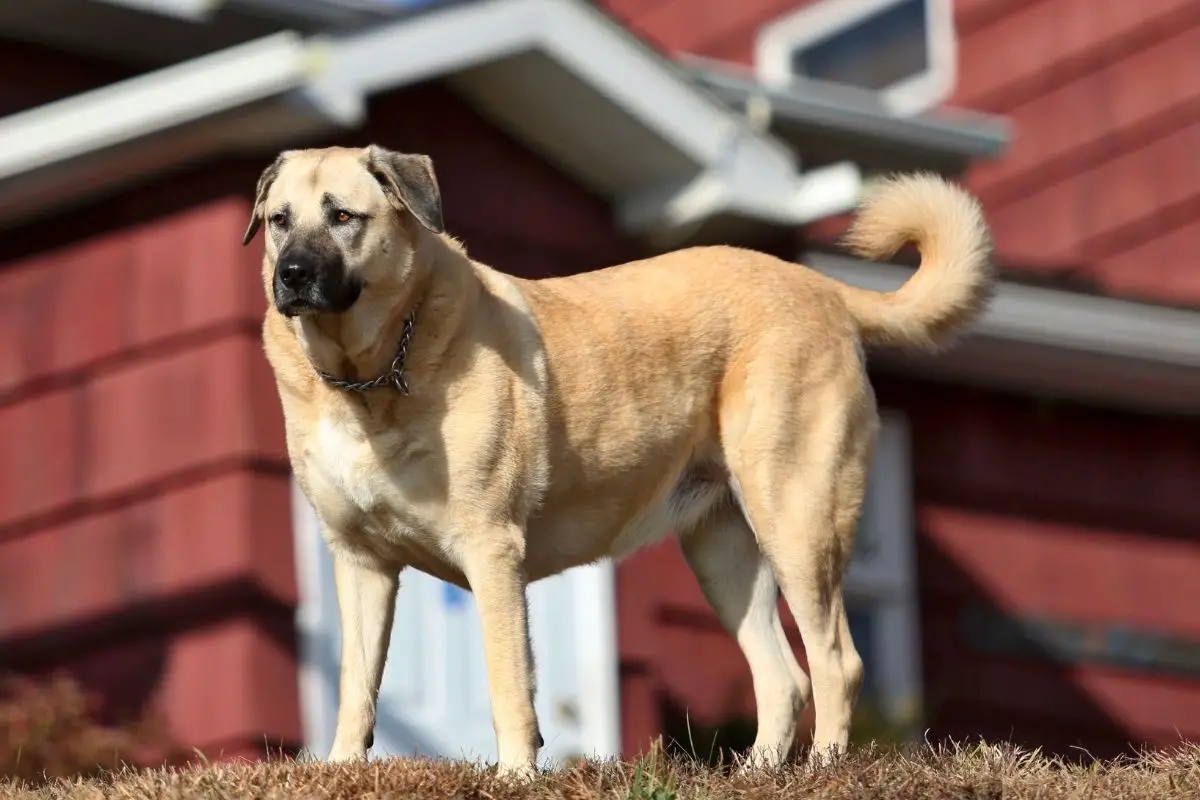
Bite Force: 743 PSI
Male Average Weight: 119 lbs
Female Average Weight: 99 lbs
Not to be confused with the Anatolian Shepherd (which also originated in Turkey), the Kangal is a highly intelligent breed with a whopping bite force. At 743 PSI, the Kangal is the world’s strongest dog.
Bred to keep a watchful eye over livestock for over 700 years In Turkey, not only is the Kangal a fearless protector, but it is also Turkey’s national dog breed.
Their protective nature means that Kangals need to be trained exceptionally well from the offset.
It’s important to find an experienced trainer who has a proven track record working with Kangals.
If you do this, then there’s no reason why a Kangal can’t be a great family pet, who, unsurprisingly, will keep your home intruder free.
This safety around the home doesn’t come without its workload though, as Kangals require a good deal of daily exercise and play.
Do this for them, and they will be incredibly affectionate, loyal dogs, that, pound for pound, are the strongest breed in the world.
2. Bandog
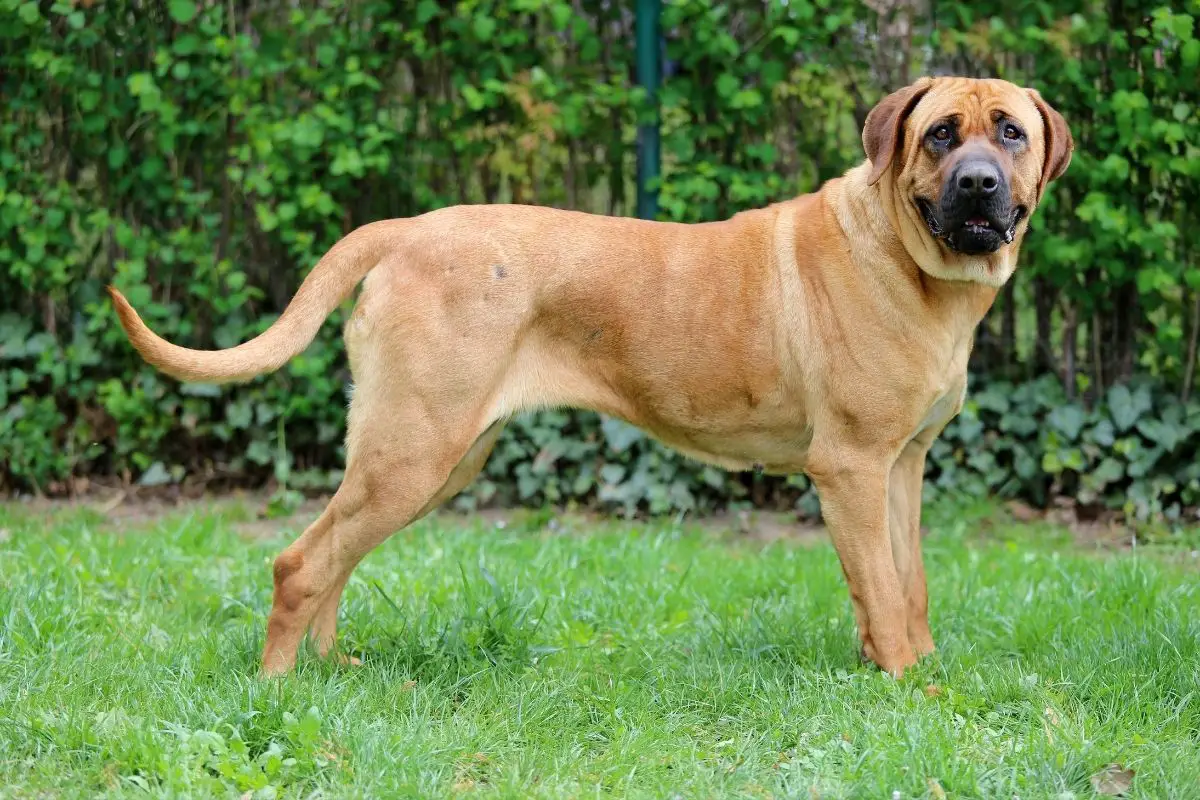
Bite Force: 730 PSI
Male Average Weight: 112 lbs
Female Average Weight: 97 lbs
With a “tough dog” reputation that they can’t seem to shake, Bandogs are often branded as aggressive and dangerous dogs by society.
In the wrong circumstance and with the wrong owner, this could be considered true. But, with an experienced owner who gives them the right training, Bandogs are incredibly gifted creatures.
Sure, their 730 PSI bite force is strong enough to crunch through bone, but their unflinching loyalty means you and your family can rest easy on the bone-crunching front.
They are a modern dog breed that originated in the 1960s in England as a Bulldog and mixed Mastiff hybrid.
If you haven’t raised a strong breed of dog before, then a Bandog wouldn’t be advised as your first.
If, however, you’ve got experience in dog training and ownership, and you’re looking for an intelligent guard dog to step in as the protector of your Kingdom, Bandogs are ready to fill that role and then some.
3. Cane Corso
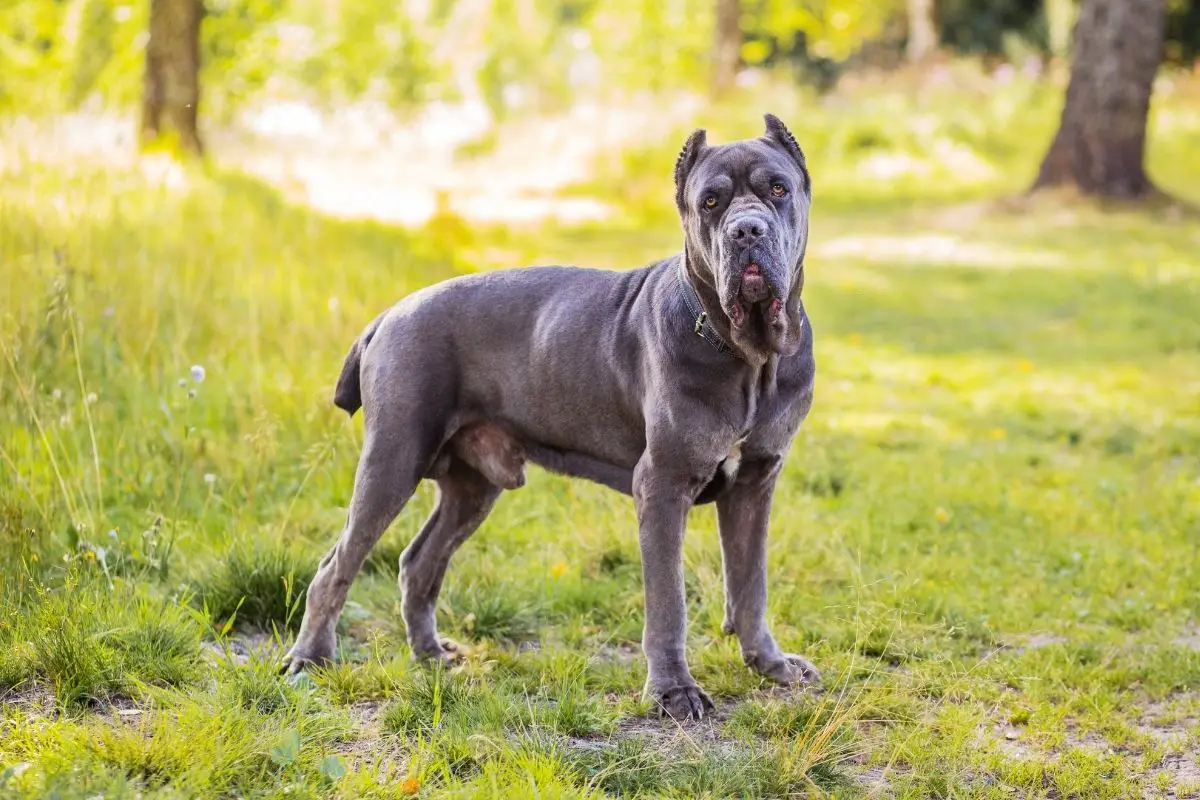
Bite Force: 700 PSI
Male Average Weight: 104 lbs
Female Average Weight: 94 lbs
Cane Corsos are an Italian breed of Mastiff that is often confused with the mighty Bandog.
The big difference between the two is size, as Cane Corsos are considered medium-large dogs while Bandogs sit comfortably in the large category.
Not only do Cane Corsos offer great companionship to their owners, but they are also fearless guard dogs and protectors of livestock.
Even though they have a potent 700 PSI bite force and are known for their explosive power, there is something almost elegant about a Cane Corso’s posture.
It is this upright, respectable posture that makes for a distinguished sidekick in life.
However, it must be known that even though the average Cane Corso is smaller and lighter than a Bandog, they still have plenty of muscle to control.
For this reason, they should only be owned and trained by people who know what they’re doing.
4. Boerboel
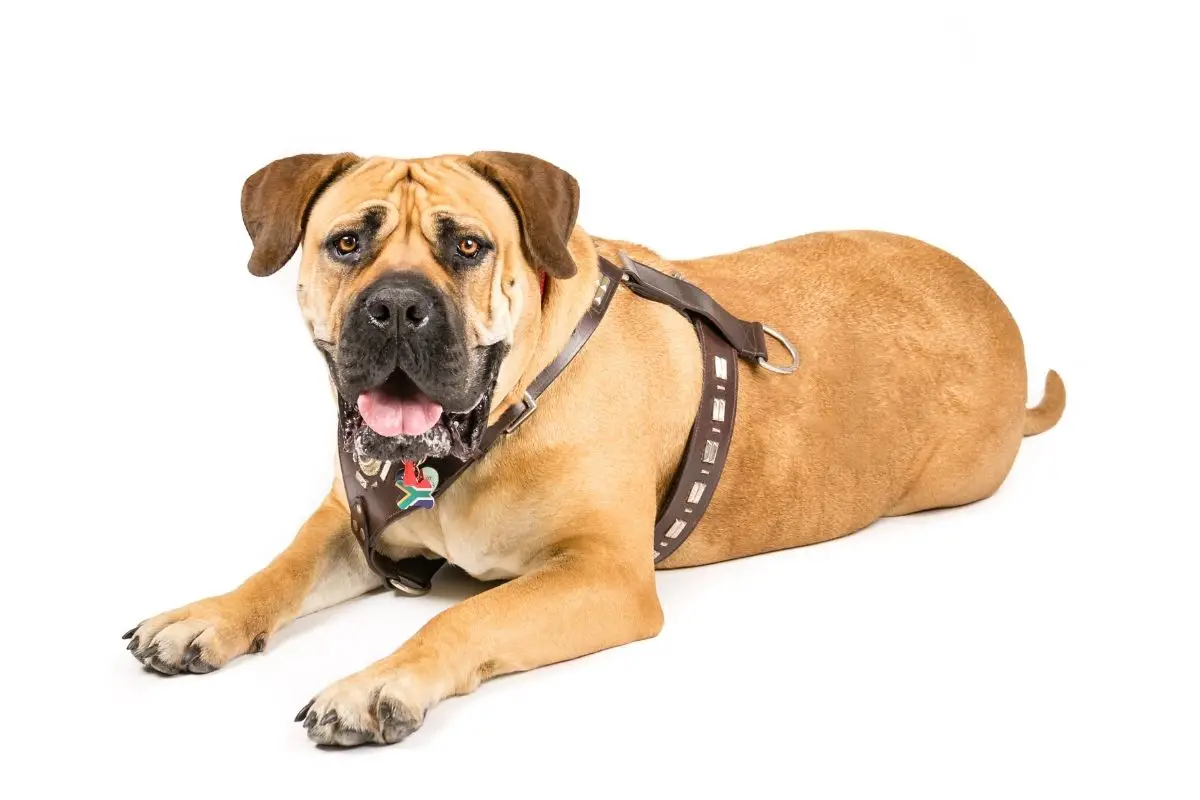
Bite Force: 700 PSI
Average Male Weight: 154 lbs
Average Female Weight: 141 lbs
Pronounced “boo-r-bull”, which loosely translates to “farmer’s dog” in Dutch/ Afrikaans, the Boerboel is another Mastiff-type breed that is considered big, but not so mean.
Of course, if they feel threatened, they will have no qualms about removing the said threat, however necessary. In general, though, Boerboels make great family pets.
They are wholeheartedly devoted to their owners and can be super affectionate to kids and other pets.
Any person or animal in their inner circle is protected to the end, and anyone who looks to unhinge that inner circle better know what’s coming.
They are instantly recognizable by their black mask and short coat which can be brown, black, cream, and even burnt orange.
When you consider that an average male can weigh in the vicinity of 154 lbs, you will want to make sure that whoever is taking the reins of an overly excited Boerboel is ready for the challenge.
5. English Mastiff
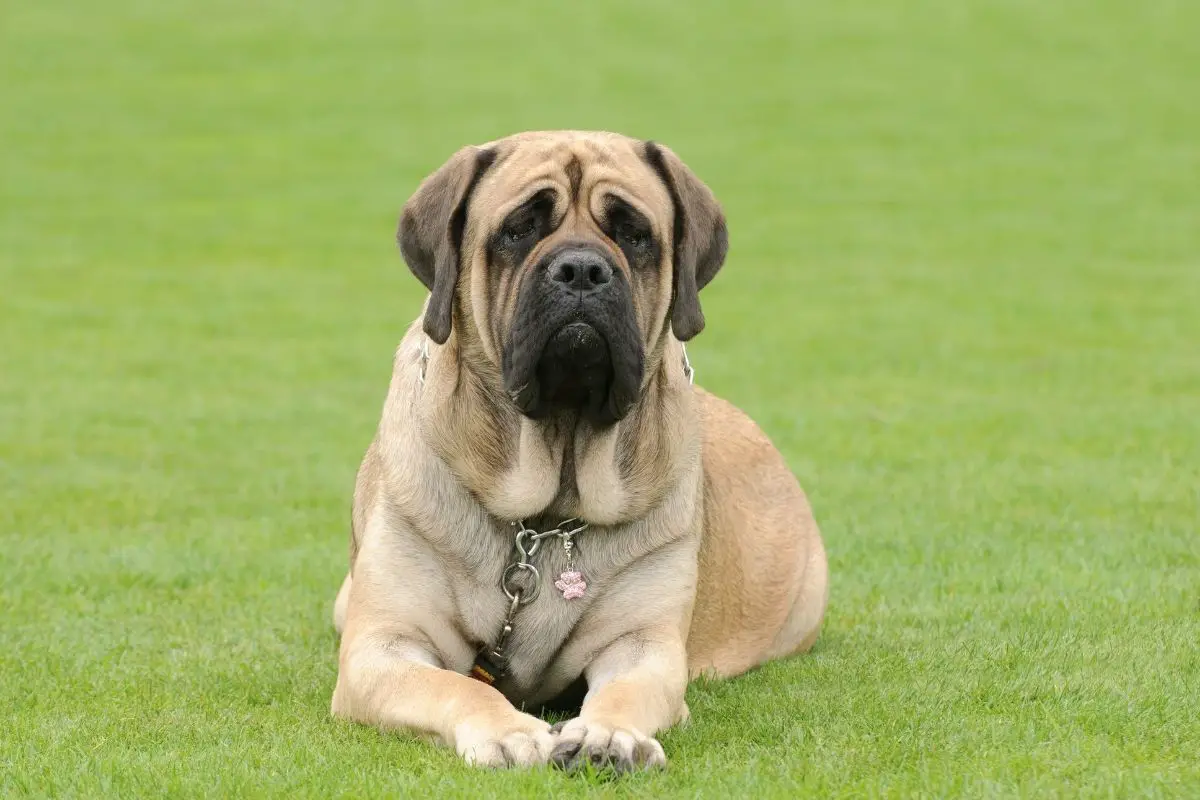
Bite Force: 552 PSI
Average Male Weight: 150 – 250 lbs
Average Female Weight: 120 – 200 lbs
Needing but no introduction, the English Mastiff is a popular breed of dog that is as courageous as it is powerful.
Their bite force of 552 PSI is impressive enough, but when you realize that males reach up to 250 pounds in weight, these giants of the dog world demand respect.
Although they regularly weigh more than we do, thankfully, they are big softies (most of the time).
Powerful but gentle, courageous but docile, large but loyal, English Mastiffs have been by our side for over 2,000 years to fight off bulls, bears, and anything else that threatened the pack.
One thing to consider is that their broad heads and gaping mouths love to create and expand drool, so make sure you’re ready with the mop.
6. Tosa
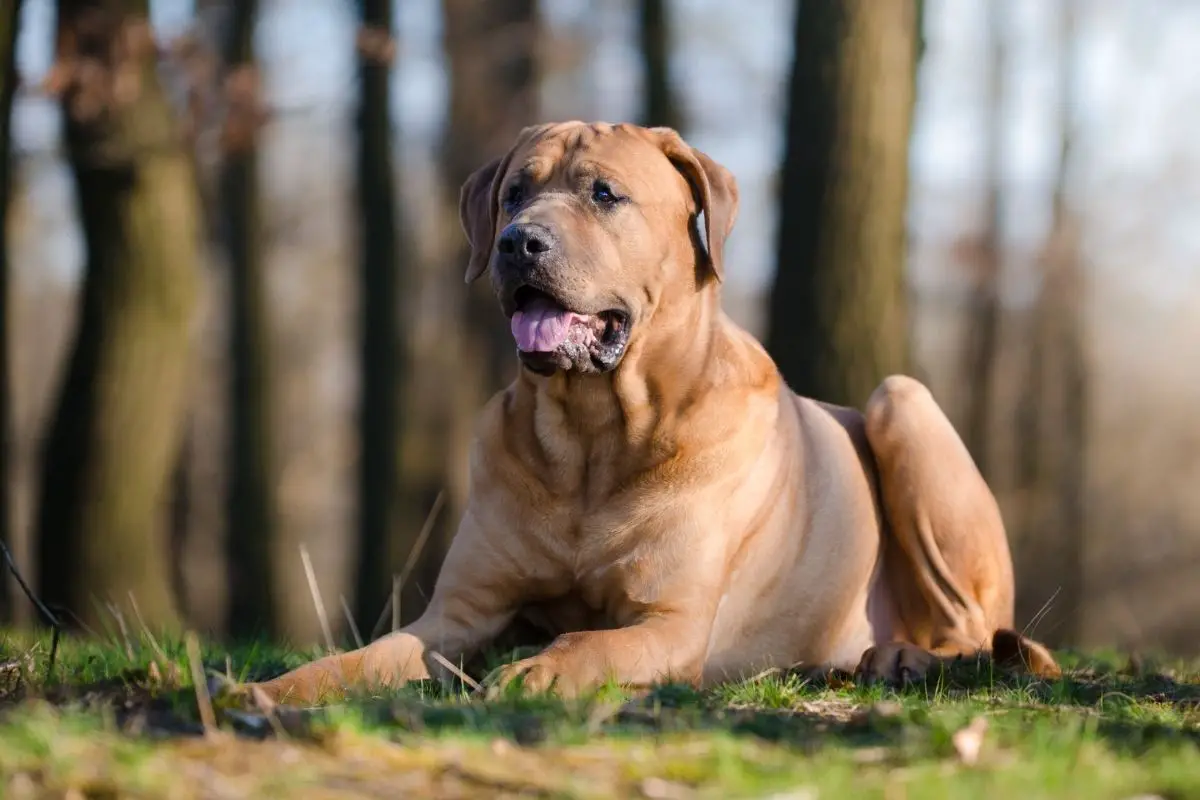
Bite Force: 500 PSI
Average Male Weight: 120 – 170 lbs
Average Female Weight: 90 – 140 lbs
The Tosa is a large breed of dog that originated in Japan. This breed can also be referred to as “Tosa Inu ”, although here in America most people refer to them simply as the Tosa.
They gained this name from the place where they were originally bred in Japan – Tosa, Shikoku (present-day Kochi).
Because of their fearless nature, incredible strength, and high intelligence, they are still used to this day (controversially) as Japanese fighting dogs.
Again, and like most large dog breeds, Tosas require firm obedience training from a young age.
A Tosa that knows its place in the pack tends not to snap or bite without threat.
However, because of their assumed aggressive tendencies, there are strict laws in some countries that restrict or flat-out ban the ownership of Tosas (the UK is one such place).
Luckily, if the idea of owning a Tosa has caught your attention and you’re an experienced dog owner who’s up for the challenge, there are currently no such laws in place in the US.
7. Leonberger
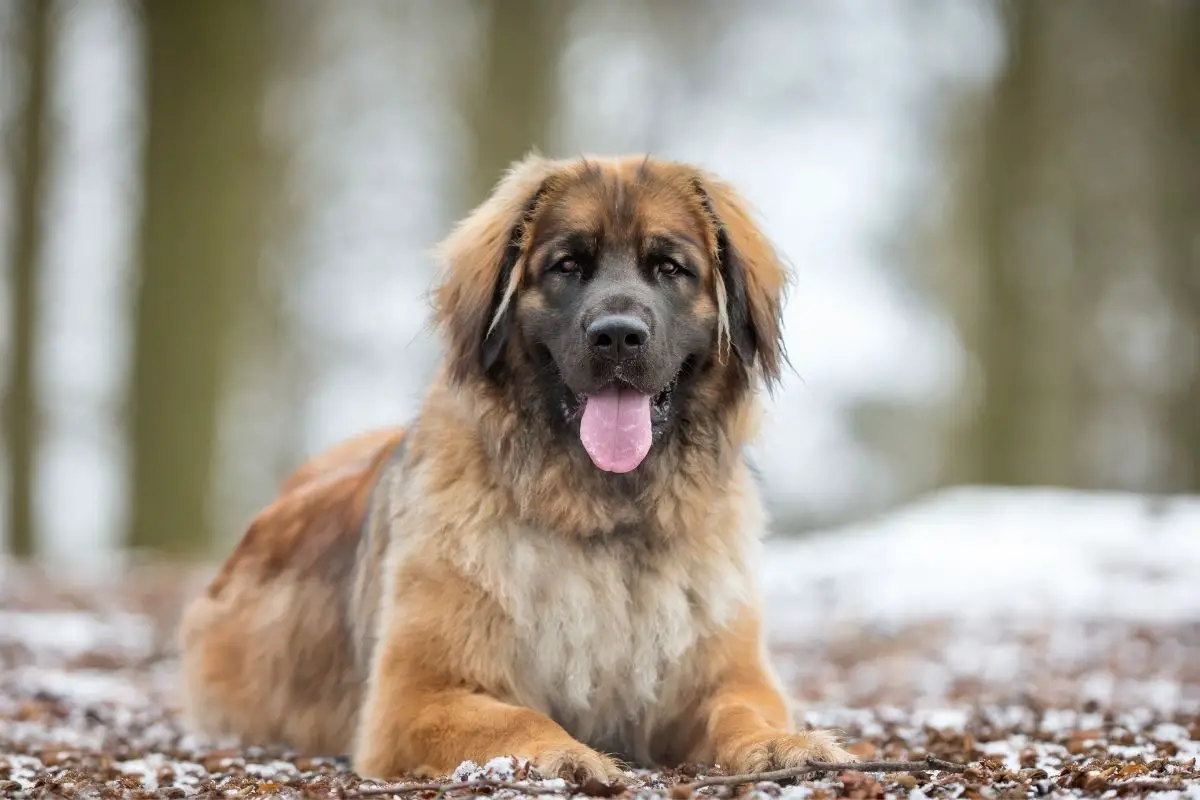
Bite Force: 440 PSI
Average Male Weight: 130 – 170 lb
Average Female Weight: 100 – 130 lb
The Leonberger is another breed of dog that has gained its name from its place of origin, and this powerful pooch hails from Leonberg, Germany.
Unlike the short-haired breeds we’ve featured so far, Leonbergs are known for their beautifully shaggy coats.
Lion-yellow, red-brown, and sand are the colors that their luscious locks are usually representing, and let us tell you, they are a sight for sore eyes.
Their general disposition and facial structure can also be considered more “approachable” than the breeds we’ve featured so far. Channeling the famed Saint Bernard in some respects.
For this reason, they are widely accepted as family pets, but, like any giant breed, they need proper training from a young age.
Originally bred to be working dogs on German farms, their hard-working spirit and soft demeanor make for an impressive breed indeed.
This is also why it’s easy to see how so many people have a soft spot for the powerful yet placid Leonberger.
8. Rottweiler

Bite Force: 328 PSI
Average Male Weight: 110 – 132 lbs
Average Female Weight: 77 – 105 lbs
Rottweilers have a notorious reputation for being the “heavies” of the neighborhood.
And yes, in some respects, their reputation is warranted, as unfortunately, Rottweilers have attacked their fair share of people in the past.
But this aggressive streak in Rottweilers can almost always be put down to a lack of training and proper care from their owners, or because someone has antagonized or threatened them in their domain.
Rottweilers are another German-origin breed that was bred to be lean, mean herding machines, and of course, they excelled tremendously.
Standing 27 inches at the withers for males, and 25 inches for females, they certainly aren’t the largest dog breed on this list, but boy do they pack a bite.
With 328 PSI of bite force, you will want to make sure you’re on the good side of a Rottweiler.
If you’re considering owning one, then make sure you’ve got the time and energy that is required to train and maintain a healthy and happy Rottweiler (because it’s a lot).
If not properly cared for, Rottweilers are prone to packing on the pounds. Which, in turn, will agitate them and give them a nasty side that you’d be best informed to avoid.
9. Newfoundland
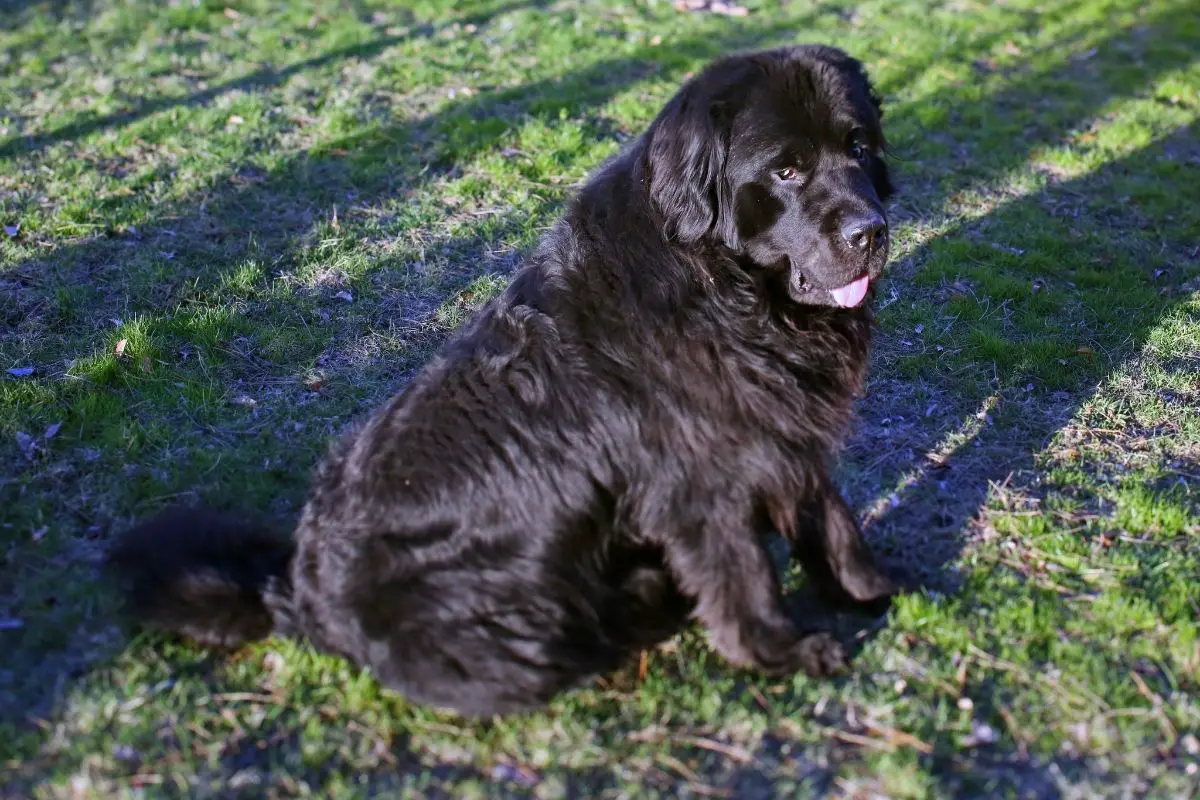
Bite Force: 240 PSI
Average Male Weight: 130 – 150 lbs
Average Female Weight: 100 – 120 lbs
Newfoundlands were originally bred and used by fisherman as working dogs, in, you guessed it, Newfoundland.
Because of their association with fishermen, it should be a little surprising that this giant breed of dog is known as an excellent swimmer.
One thing that may surprise you, unless, of course, you already have a soft spot for “Newfies” (as they’re often referred to), is that they even have webbed feet.
This evolutionary trait is a clear indication of their excellence in the water and why fishermen were so eager to have them aboard their vessels.
Sometimes even bringing them out into the high seas on long voyages. Known for their oversized frame, deep bark, and shaggy coats, you may be mistaken for thinking Newfoundlands are a breed to fear.
Quite the contrary, in fact, these dogs are noticeably friendly, especially with kids, which is what gave them their “nanny dog” nickname.
On top of stepping in as the new nanny in town, they will protect their owners until the bitter end, chivalrously getting between them and danger.
It goes without saying that their bite force is something not to be messed with, and you should always teach your kids to give Newfoundlands the respect they deserve.
10. German Shepherd
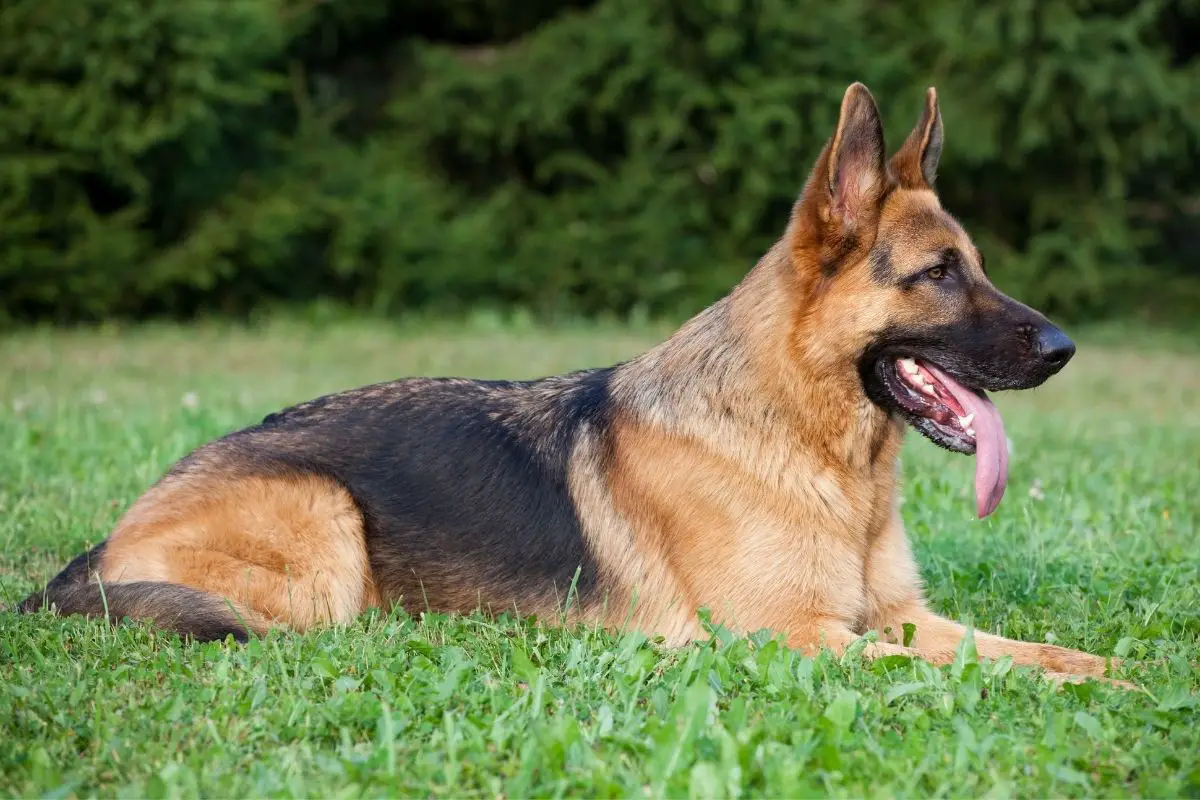
Bite Force: 238 PSI
Average Male Weight: 66 – 88 lbs
Average Female Weight: 49 – 71 lbs
Also known as the Alsatian, German Shepherds are highly intelligent canines with a very keen sense of smell.
These two desirable traits coupled with their courageous nature and eagerness to please are what make them such great working dogs.
So much so, that police forces now utilize them in three lines of police work.
Suspect apprehension, narcotics detection, and search-and-rescue work are where the German Shepherd shines, playing their role in incredibly important police work.
Not only are they currently serving as police dogs all over the U.S, but they also make great companions.
Despite their strength and medium-large size, they can be friendly family pets, as long as they are treated well and trained properly.
One tip with German Shepherds is to socialize them as early as possible to avoid their nature being too overprotective.
It’s true, intelligent dogs are a lot of work, as they require more stimulation than less intelligent breeds.
With an arresting appearance and gifted mind, the German Shepherd is one of the most respected dog breeds on earth.
11. Great Pyrenees
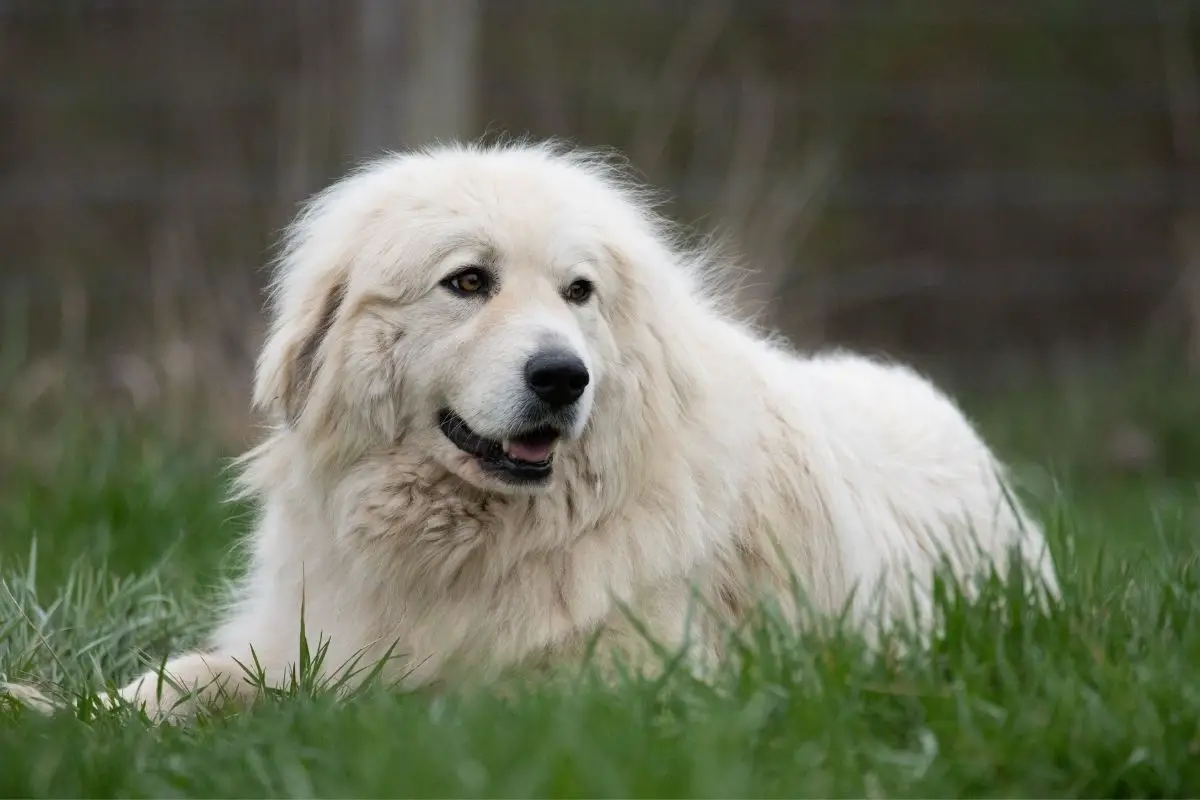
Bite Force: 240 PSI
Average Male Weight: 100 – 160 lbs
Average Female Weight: 85 – 115 lbs
Instantly recognizable by their striking white coat, Great Pyrenees are a large breed with a powerful bite force of 240 PSI.
Males can grow up to a staggering 32 inches at the withers, while females are generally a little smaller, measuring 29 inches at the withers.
Hailing from the French side of the mighty Pyrenees mountain range, the Great Pyrenees is a strong-willed breed with a tenacious nature.
Great Pyrenees were bred to protect livestock, as well as haul loads across the snowy mountains and valleys.
Their temperament is considered patient and gentle (most of the time). However, the guardian in them does have a tendency to present itself when threatened.
For this reason, they require an owner who can handle a large dog with a strong will and an even stronger body.
12. American Pit Bull Terrier
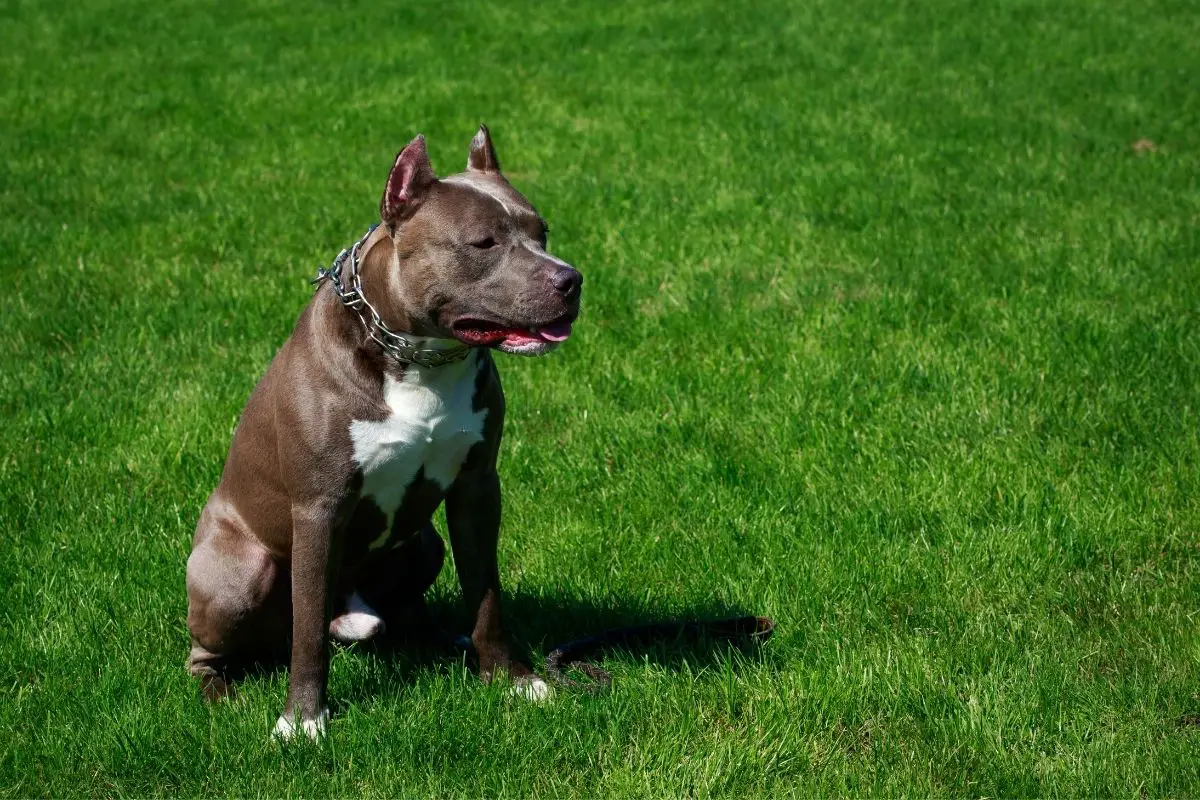
Bite Force: 235 PSI
Average Male Weight: 35 – 60 lbs
Average Female Weight: 30 – 50 lbs
A descendent of the Old English Bulldog, American Pit Bull Terriers may be the most misunderstood dog breed in history.
Their association with aggression can be traced back to their inhumane dogfighting days, which has given them an unshakeable reputation.
Sure, Pit Bulls can get aggressive, but so can just about every other dog breed in existence.
Ask any Pit Bull owner or expert and they will all tell you of the Pit Bulls undying affection for their owners.
The trick is to try and train them from early on and make sure you’re up to the challenge with previous experience in dog training.
That’s not to say that adopting a Pit Bull isn’t possible either, because it is. But, without knowing their history, Pit Bulls may require extra-special care and training to ensure they remain cool, calm, and collected.
13. Great Dane

Bite Force: 238 PSI
Average Male Weight: 140 – 200 lb
Average Female Weight: 100 – 140 lb
The Great Dane is one of the tallest dog breeds in the world. In fact, so impressive is the Great Dane’s stature, that they can’t help but turn heads wherever they may roam (usually the local dog park).
Fully-grown adult male Great Danes can reach an incredible 44 inches when standing, and weigh an astonishing 200 lb.
Thankfully, all their size and muscle power doesn’t account for an aggressive side, as Great Danes are often referred to as gentle giants.
Although Great Danes can live up to 14 years, their average life expectancy is much lower at 8 – 10 years.
This disparity can be put down to the associated health issues of being so incredibly large.
One common problem with Great Danes is they are prone to hip dysplasia.
This means that excessive jumping up and down is not recommended for Great Danes, and they should be trained to refrain from overly strenuous activities.
For this reason, they aren’t considered great pets for families with children.
Instead, they are more suited to a distinguished life with an owner who isn’t going to coax them into jumping in leaps and bounds.
14. Saint Bernard
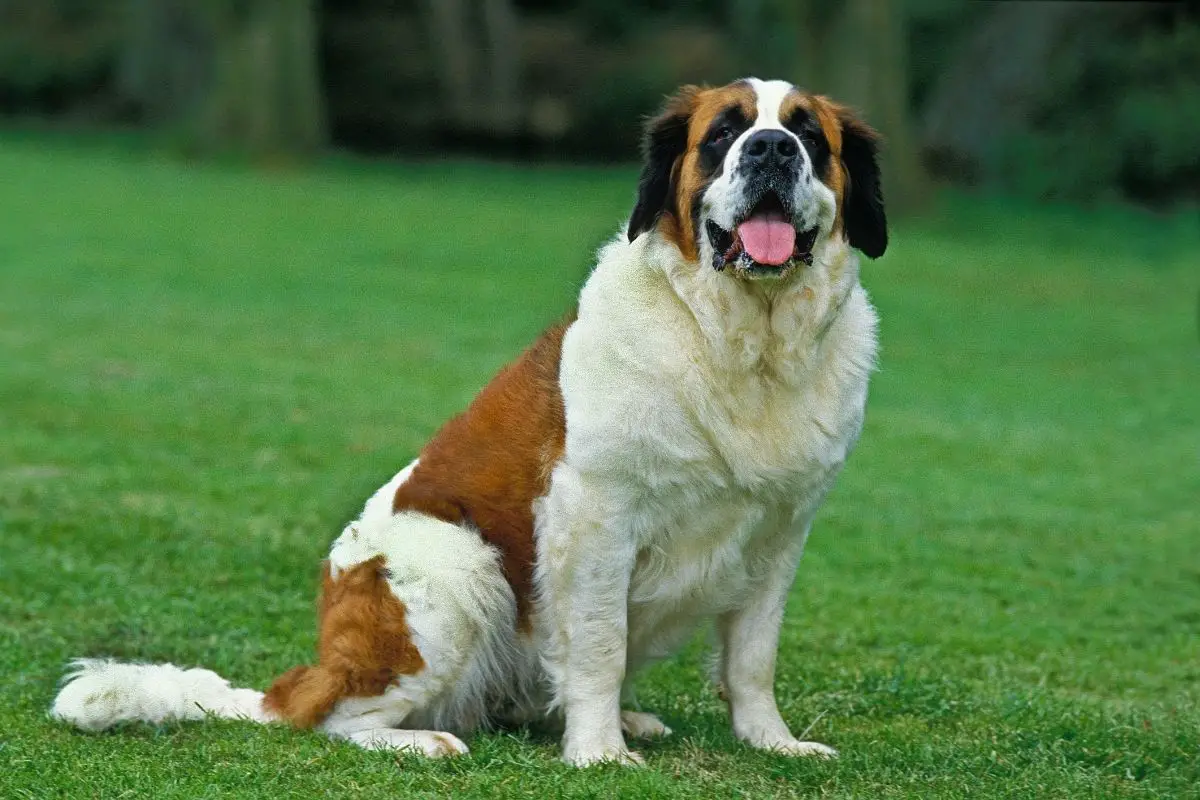
Bite Force: 235 PSI
Average Male Weight: 140 – 180 lbs
Average Female Weight: 120 – 140 lbs
It’s impossible to picture the large and loveable Saint Bernard without thinking about everyone’s favorite 90s family movie Beethoven.
Their friendly and approachable nature is what makes Saint Bernards such amazing family pets, as they love to protect and show affection.
Saint Bernards are large working and herding dogs that originated in the Alpine regions of Switzerland and Italy.
Working well with humans, they were used to protect livestock and haul supplies on sleds.
Bred by Monks in the 10th century, Saint Bernards are also one of the oldest dog breeds still in existence.
One big consideration is their extra-thick coat of fur which is ideal for keeping warm in their Alpine homeland, but could pose a serious threat in warm weather locations.
If you happen to live in a Southern state (lucky you) where the mercury regularly peaks above 80°F, then you may want to skip Saint Bernard and opt for a short hair breed instead. That, or, you could always move somewhere colder?
15. Boxer
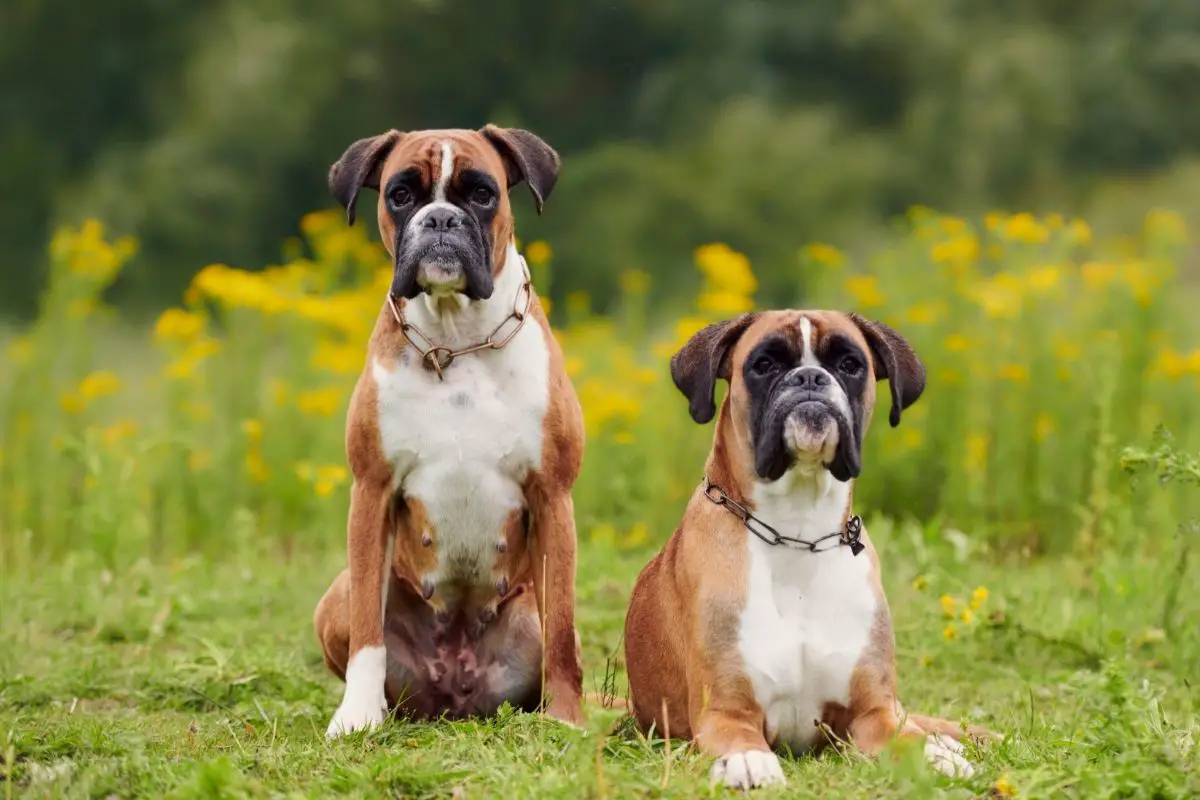
Bite Force: 230 PSI
Average Male Weight: 60 – 70 lb
Average Female Weight: 50 – 60 lb
Although they may bear some similarities in appearance, Boxers and Pit Bulls are not from the same family.
Boxers were developed in Germany in the late 19th century as a hunting Mastiff from the now extinct Bullenbeisser breed. They are an energetic breed of dog with a keen set of senses.
Boxers make great family dogs on account of their playful demeanor and for being incredibly friendly animals.
Benefiting from a medium to large build, males can grow up to 70lb, whereas females typically reach 60lb at most.
Their athletic build and powerful muscles give them impressive launch and make them great frisbee players.
If you’re looking for a large dog that can keep up with your sporty family and who poses no risk to children, bringing a Boxer home will have the kids jumping for joy.
16. Doberman
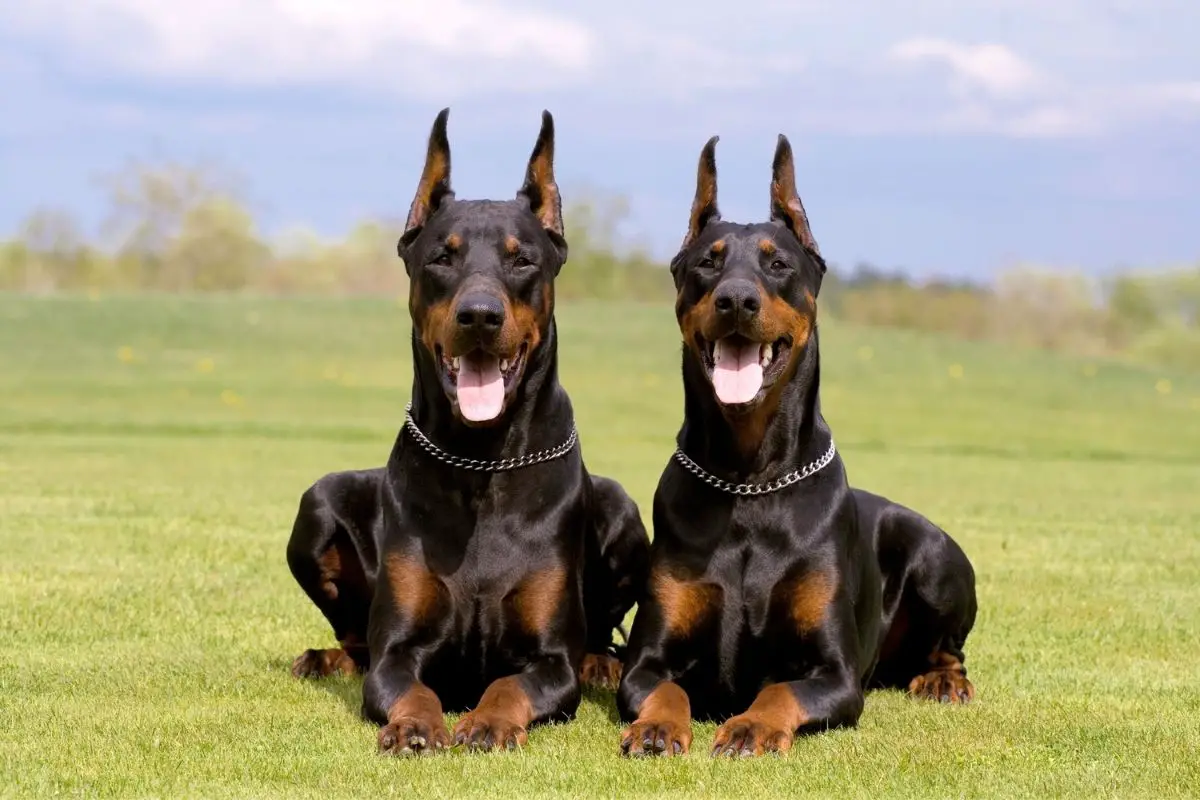
Bite Force: 228 PSI
Average Male Weight: 75 – 100 lbs
Average Female Weight: 60 – 90 lbs
Dobermans are a popular breed of dog in the U.S for their striking look and athletic build. Their pointed-up ears make them easy to recognize, as well as their jet-black coats.
Not only are they one of the strongest dog breeds on the planet, but they are also one of the fastest, reaching sizzling speeds of 32 mph.
Although they aren’t half as aggressive as some of the other breeds on this list, that doesn’t mean Dobermans are all cuddles either.
This is another breed that requires a good trainer to ensure they don’t grow an aggressive edge.
Dobermans love to stand up on their pads, which gives them the ability to get moving quickly, if needed.
This can be put down to their hunting roots in 19th-century Germany, so, if you’ve got them on-lead, best be ready for anything.
17. Rhodesian Ridgeback
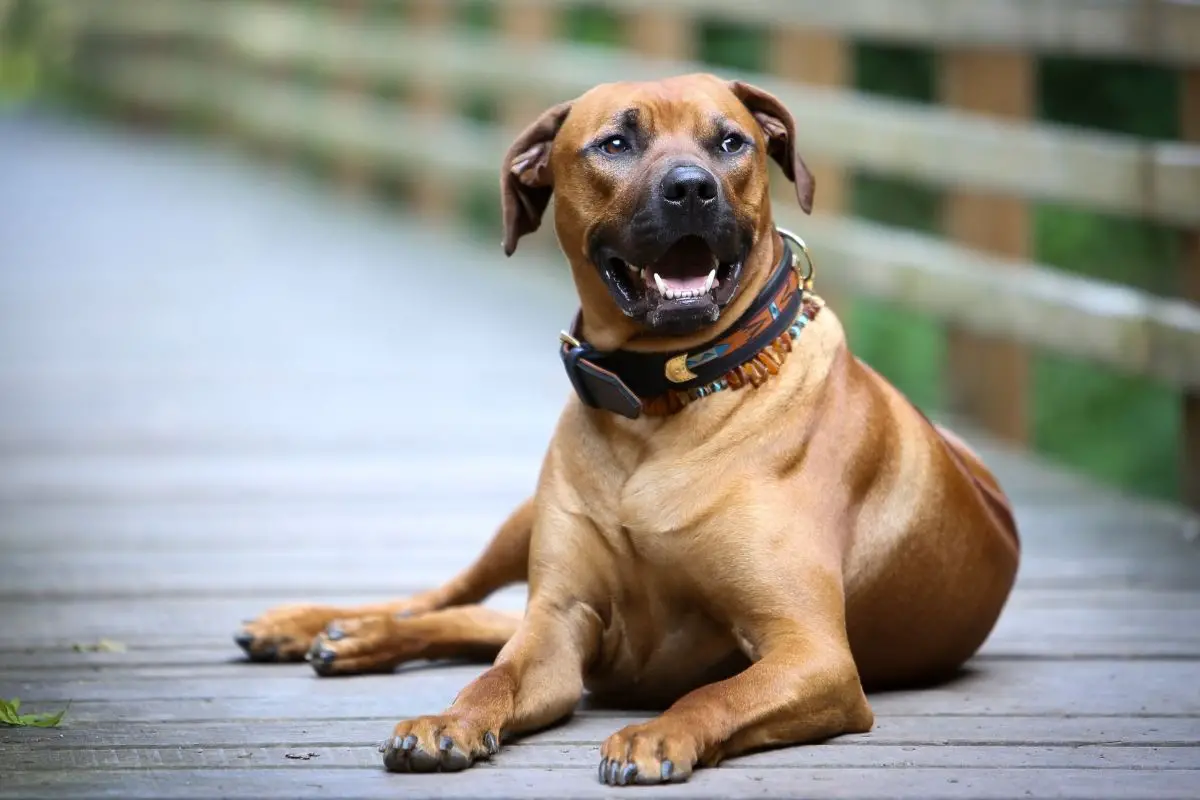
Bite Force: 224 PSI
Average Male Weight: 80 – 90 lbs
Average Female Weight: 60 – 72 lbs
Thanks to the prominent ridge of fur that runs down their entire back, Rhodesian Ridgebacks are another compelling breed of dog.
With a bloodline that can be traced to the semi-domesticated hunting dogs of the Khoikhoi people of Southern Africa, Rhodesian Ridgebacks are fearless and dignified animals.
So sharp are their hunting skills, that they were even trained to hunt down lions, which is why they’re also known as African lion dogs.
One thing to note if you’re considering a Rhodesian Ridgeback as the newest member of your family is that they’re used to space, and a lot of it.
Cruising the savannahs with tribespeople for centuries has given them an insatiable desire to run, and, therefore, they should not be considered for apartment-style living.
If you’ve got a big enough backyard and love going on long walks (or runs), then a Ridgeback is an incredibly loyal, and strong-willed animal that will take pride in being by your side.
18. Irish Wolfhound
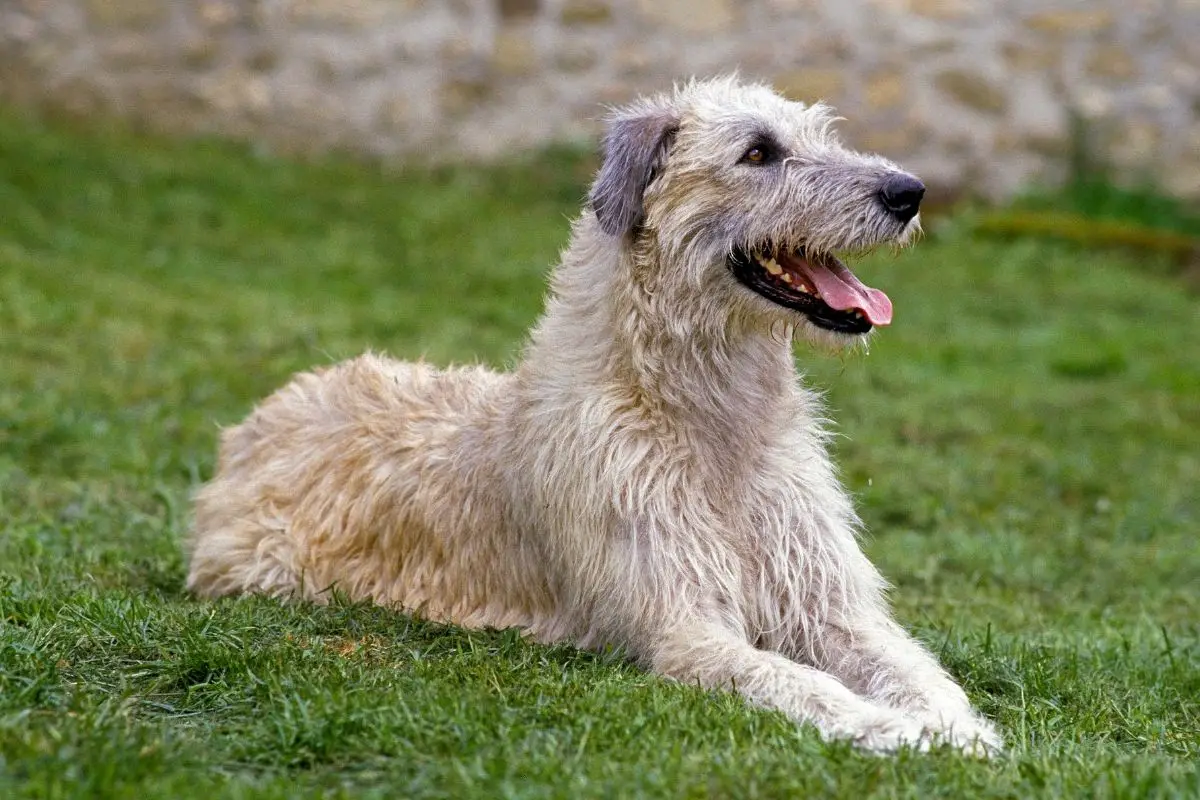
Bite Force: 224 PSI
Average Male Weight: 120 – 200 lbs
Average Female Weight: 90 – 140 lbs
If you’re wondering what the longest dog ever recorded is, then wonder no more, as the Irish Wolfhound proudly holds that title.
There’s one Irish Wolfhound in particular that goes by the name of Farrell. Farrell measures a staggering 7 feet, 9 inches from nose to the tip of his tail, and he is the official Guinness World Record holder.
So, it’s to little surprise that Irish Wolfhounds are among the strongest dog breeds in the world, with a bite force of 224 PSI.
Bred in Ireland as a hunting dog, the towering force that is the Irish Wolfhound has inspired countless poetry, literature, and mythology over the years.
Thankfully, for all their size, Irish Wolfhounds are super placid and make for great family pets.
To keep themselves warm up in the cutting Atlantic winds of Ireland, Irish Wolfhounds developed thick and shaggy coats.
This means that coat maintenance is a big consideration with this oversized breed. So, if you’re considering one, we hope you like getting down and dirty!
19. Alaskan Malamute
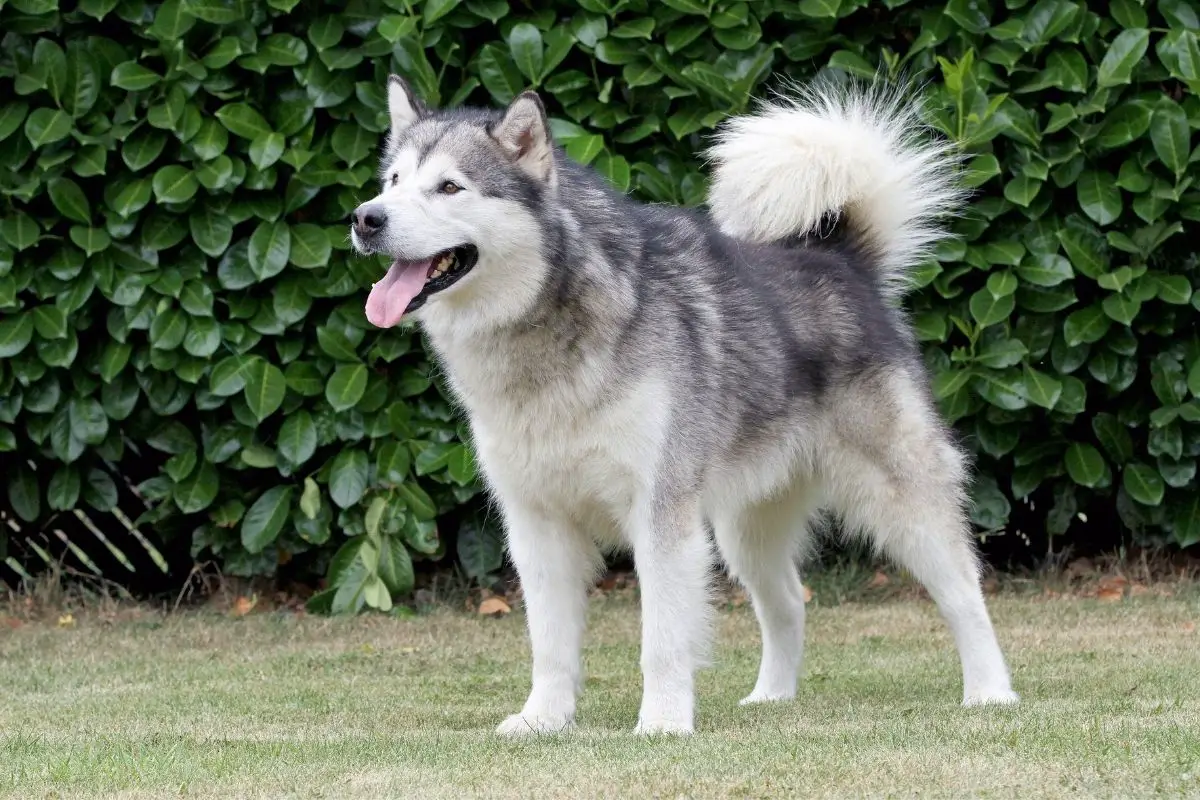
Bite Force: 220 PSI
Average Male Weight: 80 – 95 lbs
Average Female Weight: 70 – 85 lbs
Although their appearance may be similar to the Siberian Husky, once you put them side by side, the difference is obvious, and that difference is size.
Think of the Alaskan Malamute as the big cousin of the Husky. A cousin that is stronger, larger, has a more powerful bite force, and weighs over 30 pounds more, on average.
The Alaskan Malamute was originally bred to haul heavy loads across miles of ice and snow.
Although there are some working Malamutes up in Alaska and Canada still to this day, in general, they are now big loveable family pets.
Playful, friendly, affectionate, don’t let their towering appearance fool you, these pooches love to nestle up by the fireside, and are especially good with kids.
That’s not to say that putting the time in from an early age to train them isn’t necessary. But, even without proper training, their nature isn’t to hunt, it is to haul, haul and help.
20. Siberian Husky
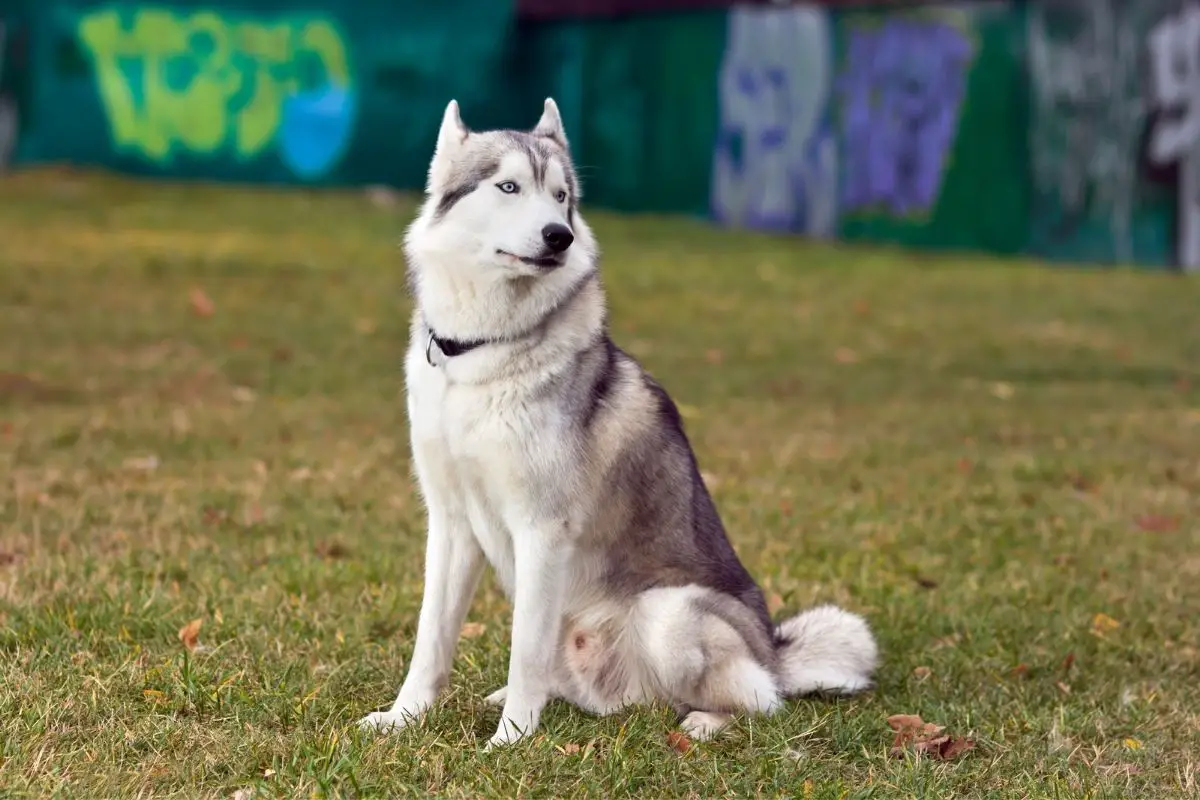
Bite Force: 218 PSI
Average Male Weight: 45 – 60 lbs
Average Female Weight: 35 – 50 lbs
Even though the Siberian Husky may weigh considerably less than the Alaskan Malamute, its strength is almost rivaled.
Not only has it got a similar bite force, but due to a unique metabolic rate, Siberian Huskies can haul loads heavier than their body weight for extended periods of time.
Because they are smaller, they are also more nimble and don’t face the same physical challenges later in life as Alaskan Malamutes do.
With incredible strength, undeniable stamina, and a well-natured temperament, it’s easy to see why Huskies are such a popular breed of dog both here in the U.S and across the world.
Not only do they have impeccable working credentials, but their friendly demeanor and eagerness to learn make them valued members of any family domain.
But again, and on account of their dog sledding past, Huskies require large amounts of daily exercise. So make sure you and your family are up for the challenge before bringing one home.
Conclusion
So there you have it, you know now the world’s 20 strongest dog breeds. Some of these may be even able to fight Lions
Whether you’re looking for a child-friendly member of the family, or a tough guard dog to protect your domain, you now know which breeds are suitable, and which are not.
With the right training and attention, there’s no reason why all of these breeds can’t make great family pets, but obviously, some have less aggressive tendencies than others, and we’ll just leave it at that.
